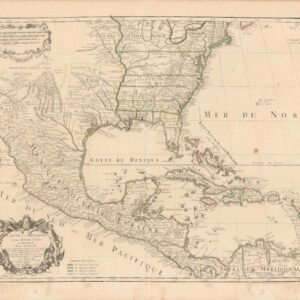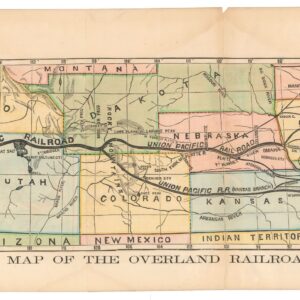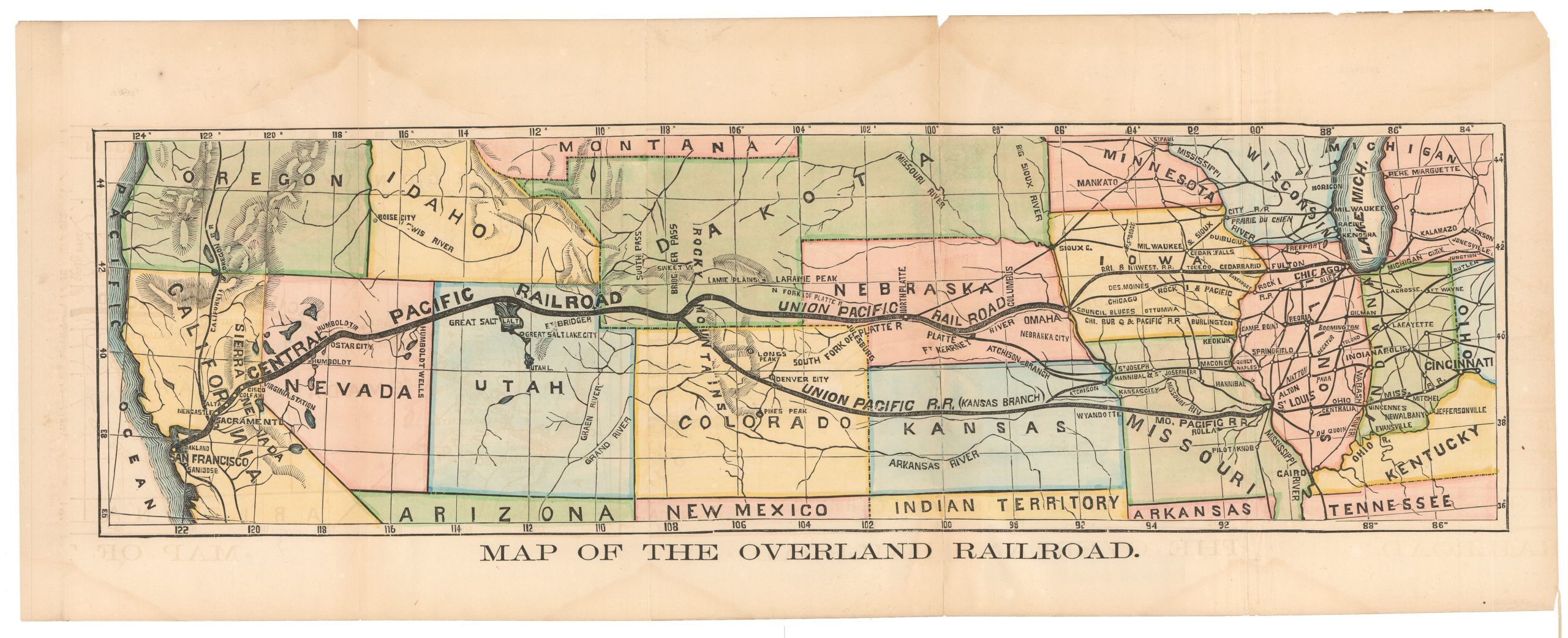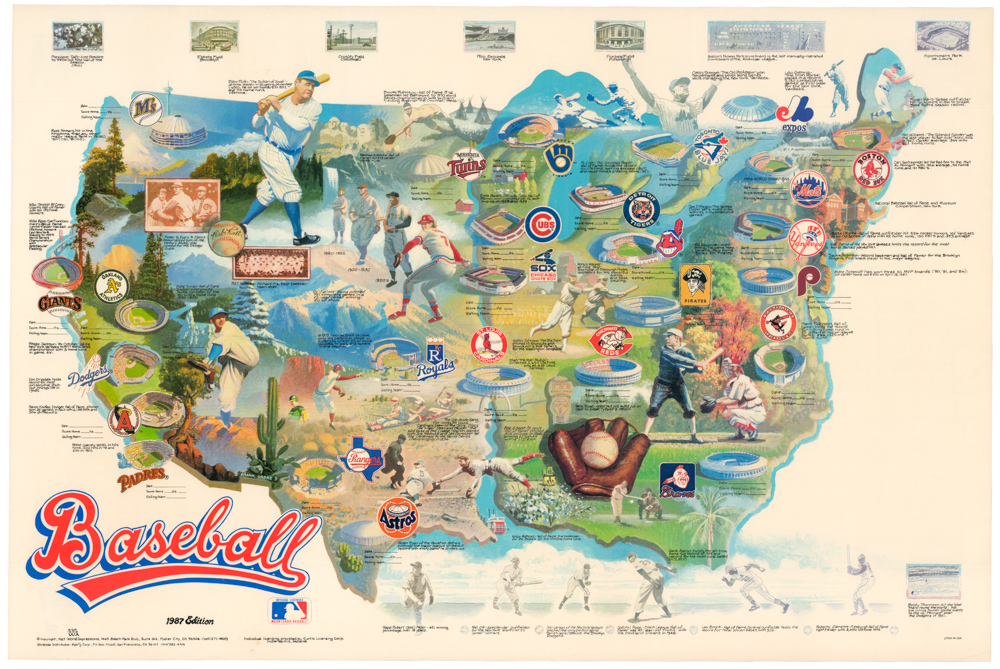An early state of Jean Palairet’s map depicting English and French possessions in America.
Carte des Possessions Angloises & Francoises du Continent de L’Amerique Septentrionale 1755.
$7,500
1 in stock
Description
Colonial possessions on the eve of a decisive moment in the history of North America.
Jean Palairet’s splendid early map of British and French possessions in North America was originally compiled as a cartographic supplement to a pamphlet entitled A Concise Description of the English and French Possessions in North America […]. The map builds on John Mitchell’s seminal map of the same year and captures the political landscape in North America at the dawn of a great conflict. The Seven Year’s War initially erupted in Europe following the Habsburg attempt to reclaim Silesia after it had been taken by Prussia in 1748. But the conflict soon developed into a global affair, with some of the most crucial battles being fought in the American colonies. Here, the conflict is better known as the French and Indian War (1754–1763).
The map was initially published in 1755, and subsequently issued in four additional states over the next four years. Neatline’s example is the scarce third state, in which an English language key has been added for the first time and the famous engravers Covens and Mortier have been added to the imprint for the first time (an overview of the five states of this map is provided below).
The map covers the eastern half of North America, including French and British possessions in the southern parts of Labrador and along Hudson Bay. In the west, the map ends abruptly in the wilderness of French Louisiana, where the fringe has been evocatively labeled as ‘the great unknown’ (Grand Pais Inconnus). We also note the presence of several Spanish territories. In the lower-left corner, an enormous swath of the hinterland behind Galveston Bay is labeled Nouv: (or New) Mexico. Both the Trinidad and Colorado Rivers have been drawn in and labeled. Also visible in the southern part of the map is Louisiana’s Gulf Coast, as well as the northern half of Ponce de Leon’s Florida Peninsula. Yet despite their inclusion and labeling, it is quite clear that the Spanish holdings were not Palairet’s focus. Unbeknownst to him at the time, Spain would usurp large territories from the French within years of the conflict ending in a treaty.
Jean Palairet conceived this map as a guide to help delineate the boundaries and political divisions of North America at the time. The official colonies of France and England are defined using dotted lines, which in many cases are supplemented by annotations detailing the treaties that formalized these frontiers. In the lower right corner, we find an explication of the map’s color coding, which informs us that French Colonies are green, English Colonies are yellow, whereas any disputed territories are drawn in pink. In the first two states of the map, this color key was only offered in French, but in this third state, an English version was added to the plate. Throughout the map, one finds one symbol repeatedly circled in red. The symbol is explained in the key as ‘French forts built by the French, or taken by the English,’ evocatively alluding to the state of war between these powers.
Census
Palairet’s chart is probably the first folio map of the American colonies to incorporate information from John Mitchell’s seminal eight-sheet map from that same year. Yet unlike Mitchell’s obviously pro-English stance, this map – while feigning a degree of neutral objectivity – leans in favor of the French.
A total of five states have been recorded, of which Neatline’s example is the third state. The individual states can be identified by the following features:
State 1 (1755): The explication in the lower right corner is in French only. The border between Virginia and North Carolina extends to the western edge of the map.
State 2 (1755): A note about Maine and Sagadahook Bay has been added to the key. Several new borders have been added, including one dividing South Carolina and Georgia, as well as one delineating the area occupied by the allies of England but still claimed by France.
State 3 (1755-56): This is the state that Neatline is offering for sale. The most important new element in this state is the addition of an English explication key in the lower right of the map. Another major change is found in the engraved imprint, which specifies from whom this map can be bought. In the third state, famous map dealers such as Sayer, and Covens and Mortier have been added to the mix.
Several changes have also been made to the depicted territorial borders, reflecting how the war continuously created a demand for updated versions of the map. An example is the existing boundary between North Carolina and Virginia, which has been re-labeled Borne entre la Virginie & la Caroline. Perhaps the quickest way to distinguish the third state from the second is nevertheless to note the spelling of Louisiana, which has changed from LOUSIANE to three lines reading LOUI-, SIA, & NE.
State 4 (1756): For the first time, the title cartouche has been altered to include Palairet’s name. At the same time, the date has been updated to 1756. In the imprint, Thomas Kitchin has been added to the list of dealers selling this map. And finally, the line running through the Florida Peninsula, which in the third state was attributed to the ‘Mosquito Charter,’ now reads Limites suivant la Chartre du Roi Charles II.
State 5 (1759): This last and much later state has seen the date in the title cartouche changed to 1759. The imprint has also been modified again, this time with Rocque as the only acknowledged seller.
The OCLC lists only four editions of this map, which are held at the Bibliotheque nationale de France, Brown University, the John Carter Brown Library (also at Brown), and the Bibliothèque et Archives nationales du Québec (nos. 494182030; 494182037).
Context is Everything
In the following, we provide a brief overview of the background and main events of the Seven Year’s War in North America, also known as the French and Indian War. The Seven Year’s War was, in some ways, the first world war. The expansion of the war to the American continent was largely due to France and Britain’s desire to expand their holdings in the New World. A key issue that the fighting centered on was access and control of trade routes. While the conflict raged along the entire border, no context was more embroiled in confrontation than the Ohio River Valley.
As the map shows, North America was largely subdivided into a British-dominated East Coast and a French-dominated Canada and western frontier. For the French, holding the Ohio River was a crucial way to secure connectivity between their territories. The British, meanwhile, kept pushing east, prompting the French to construct a line of forts in support of their claims. These forts are all marked with red circles on our map.
The forts soon became the highest ambition for both sides in the conflict. Control the forts, and you control the river. The British gave it their best shot and sent thousands of troops across the Atlantic in order to wrestle the Ohio River from the French. Ironically, and despite the length and scope of the conflict, when the Treaty of Paris was signed in 1763, most of the borders between French and English territories largely remained as they had been before the war. Within a short period, however, France would begin to yield swathes of Canada to the British and equally large parts of the West to Spain.
For modern Americans, the conflict did have one small but very important feature, for this was the conflict in which George Washington won his first stripes as a combat commander. Serving as a Lieutenant Colonel in the Virginia militia, this would be the only conflict in which Washington would ever surrender a battle. The experience shaped the young officer and was an important keystone in his success as both a military and national commander.
Cartographer(s):
Jean Palairet was a French cartographer from Montauban. As a young man, he emigrated to London, where he worked as an agent for the French States-General and as a French tutor to the children of George II.
Condition Description
Excellent.
References





